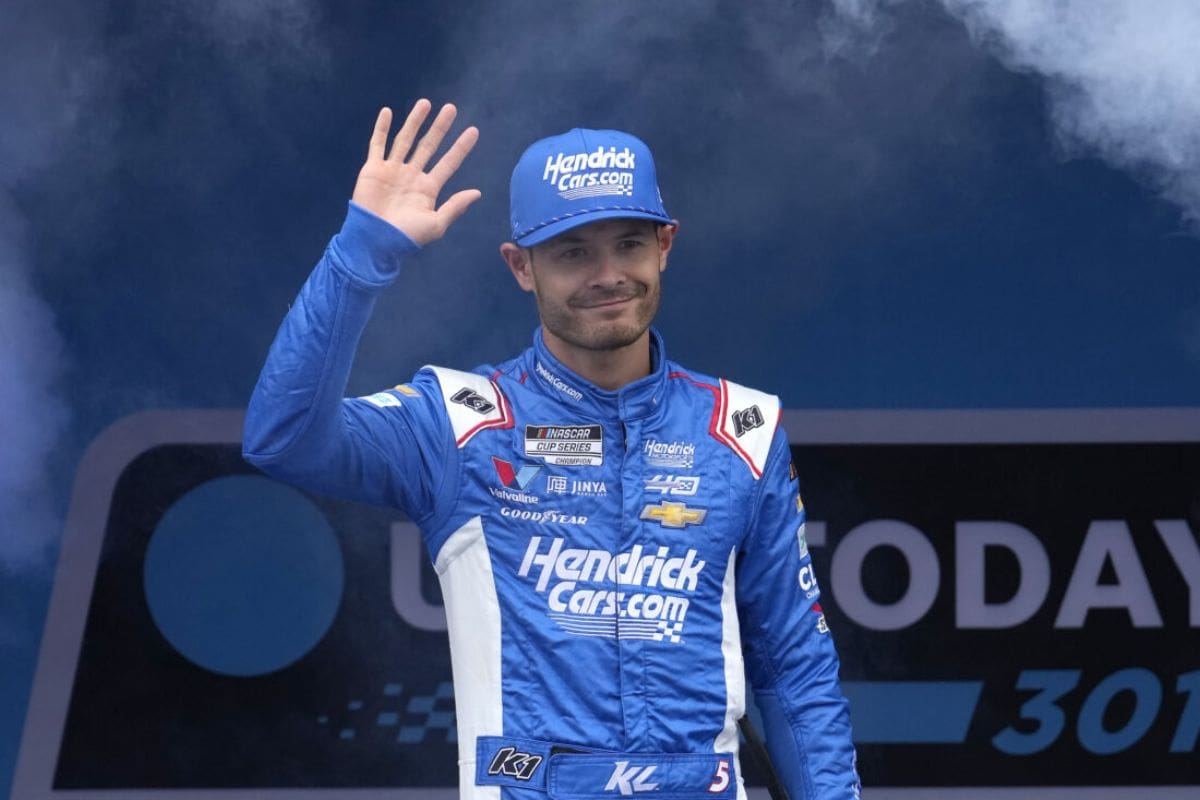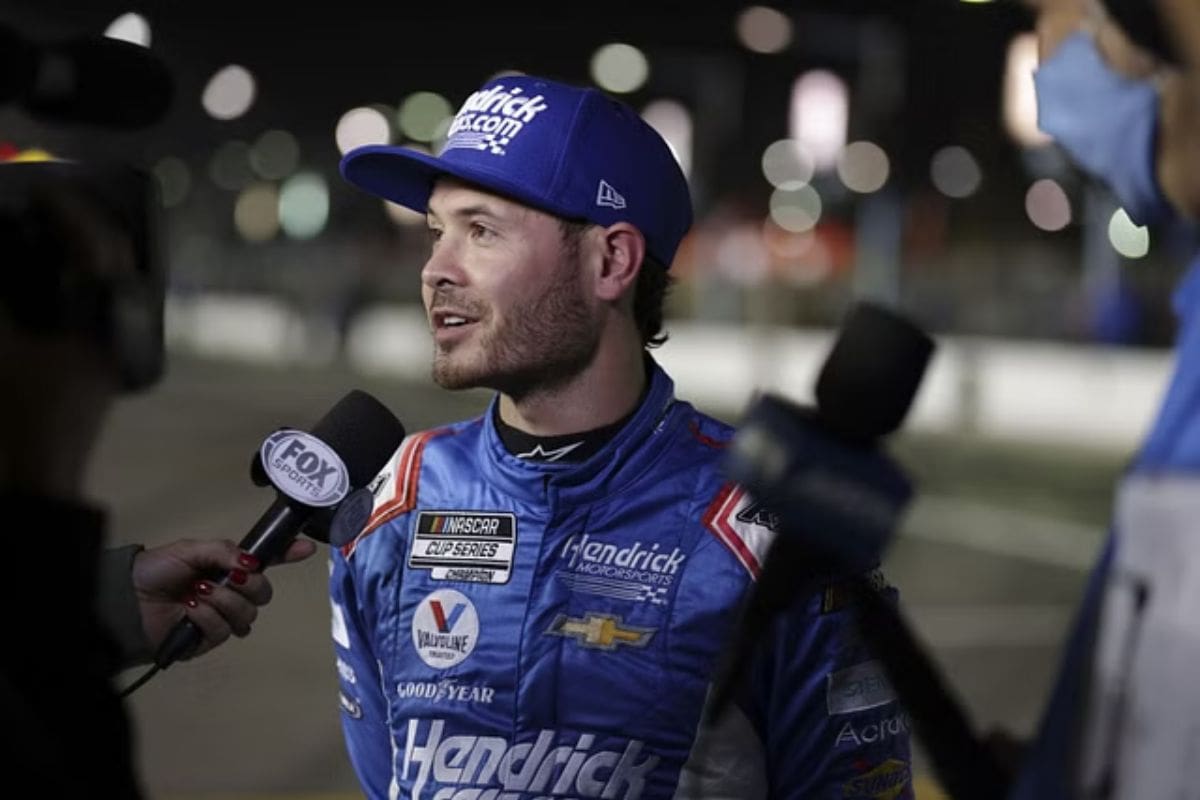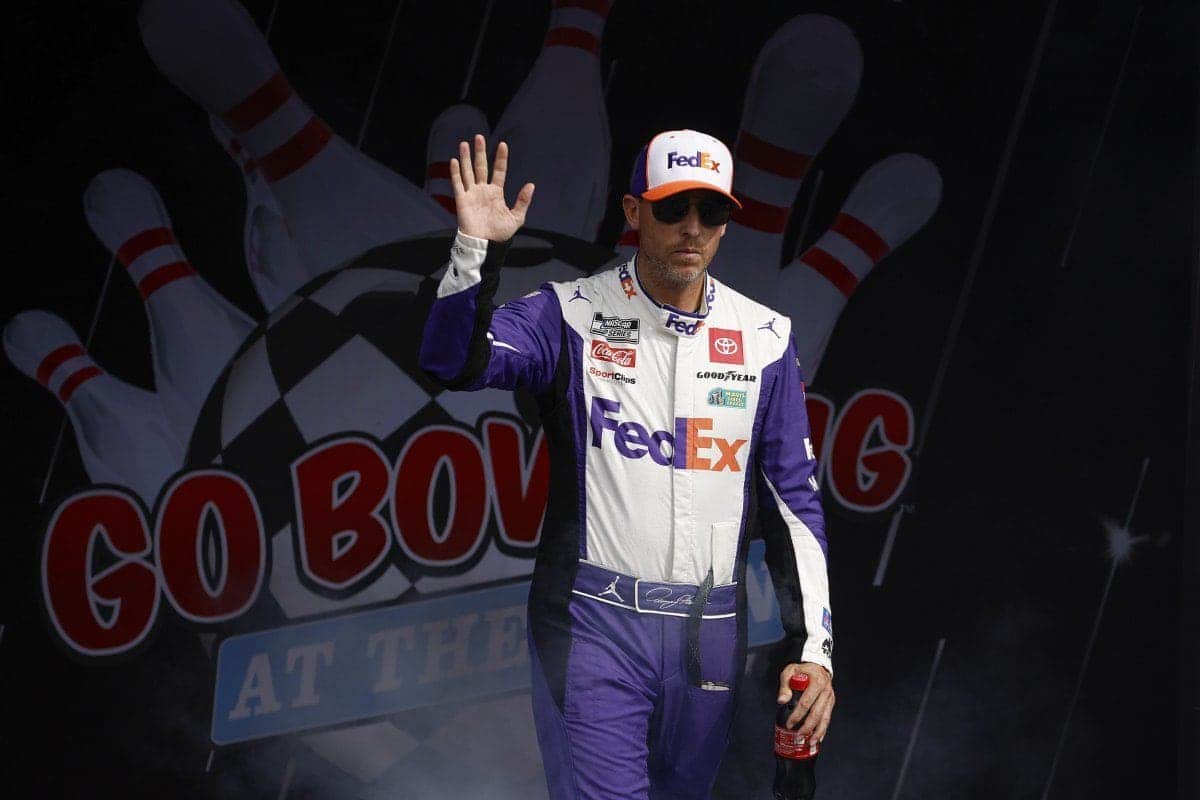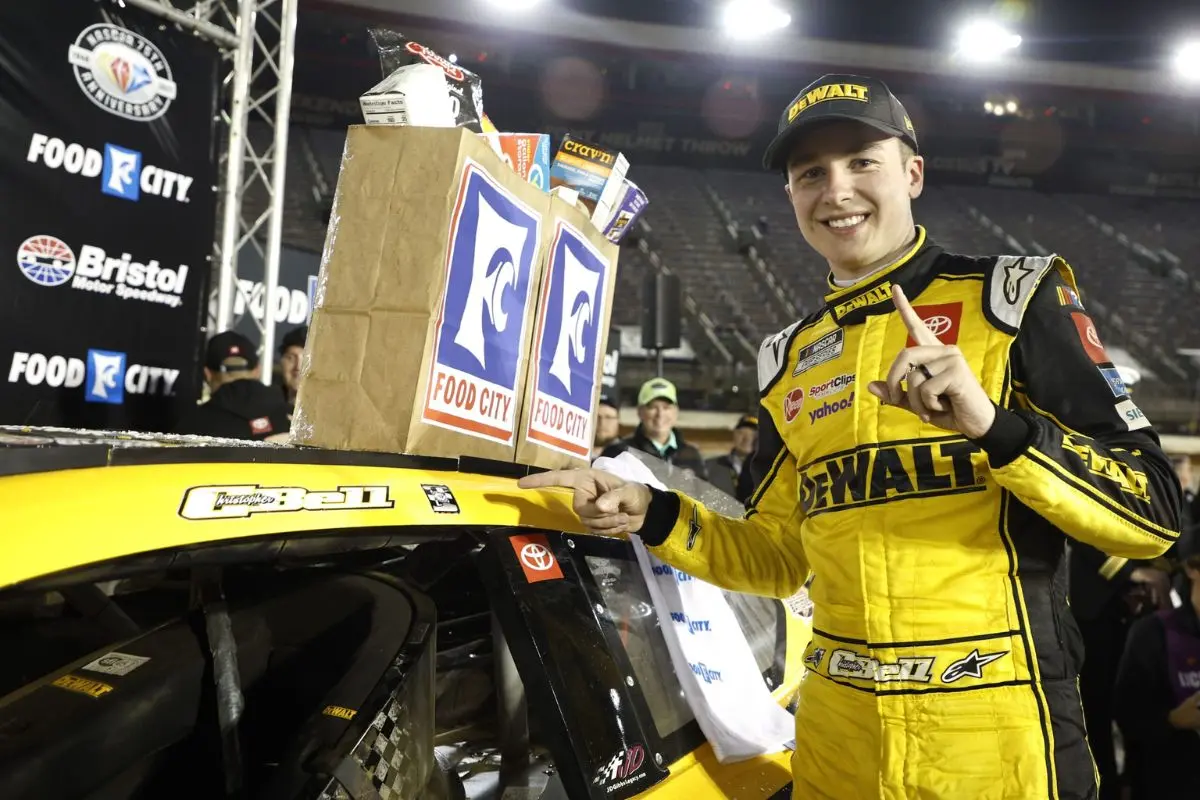Christopher Bell’s Top 5 Finish at Bristol: Christopher Bell‘s top-five finish at Bristol serves as a demonstration of his skill and resolve, yet it was overshadowed by Kyle Larson‘s extraordinary dominance throughout the race. Larson’s ability to lead an astonishing 462 laps not only secured him the victory but also highlighted the clear contrast in their performances. Bell’s disappointment, despite his respectable position, raises questions about the competitive dynamics at play and what it means for his future aspirations. As the racing community reflects on this event, one must consider how these contrasting narratives will shape the drivers’ paths moving forward.
Key Highlights
- Kyle Larson led a record-breaking 462 laps, showing his dominance and making it difficult for competitors like Bell to contend for the win.
- Christopher Bell secured a top-five finish, climbing from sixth position, but expressed disappointment over not being able to challenge for first.
- Denny Hamlin acknowledged Larson’s superior performance while facing handling issues that hindered his own chances in the final stages of the race.
- Other drivers, including Chase Elliott and Ryan Blaney, praised Larson’s skill and adaptability in navigating lap traffic throughout the race.
- Larson’s commanding victory set a new benchmark in NASCAR, emphasizing the importance of strategy and preparation for future races.
Dominance of Kyle Larson at Bristol
In a race characterized by Kyle Larson’s overwhelming control, spectators witnessed a masterclass in driving at Bristol Motor Speedway. Larson’s performance was nothing short of extraordinary, as he led a record-breaking 462 laps out of 500—an achievement that eclipsed the legendary feats of NASCAR icons such as Jeff Gordon and Jimmie Johnson. This dominance was highlighted by his ability to navigate lap traffic with a finesse that mirrored a seasoned obstacle course veteran, demonstrating not just speed but also an acute sense of spatial awareness and timing.
The race began with Alex Bowman taking an early lead, but it quickly became apparent that Larson possessed an unmatched pace. His car was perfectly tuned for the unique demands of Bristol, allowing him to maintain consistency while others struggled to keep pace.
Larson’s execution of strategy and skill left competitors, including Christopher Bell, bewildered, as Bell remarked, “I never really got close enough to really know where he was good.” This statement encapsulates the reality of Larson’s performance; his speed rendered him virtually untouchable.
While many spectators may have found the race lacking in excitement due to the absence of lead changes and crashes, Larson’s dominance illustrated the intricacies of racing mastery. His ability to command the track not only secured him victory but also set a new benchmark for excellence in the NASCAR Cup Series, prompting fans and drivers similarly to reassess the standards of dominance in this sport.

Christopher Bell’s Disappointment
Experiencing a mix of frustration and resolve, Christopher Bell found himself grappling with the aftermath of a race dominated by his competitor, Kyle Larson. Bell’s performance at Bristol highlighted his undeniable talent, as he managed to secure a top-five finish amidst a fiercely competitive field.
Beginning from the sixth position, he quickly climbed to fifth and maintained a strong presence throughout the race, even finishing third in the initial stage. However, the shadow of Larson’s overwhelming dominance loomed large, rendering Bell’s achievements somewhat bittersweet.
Despite running in the top five for most of the night, Bell’s post-race reflection revealed a deep-seated disappointment. “Disappointed we didn’t have what we needed to get up there and race for the win,” he openly expressed, emphasizing the pronounced reality of competing against a driver who appeared invincible.
“Disappointed we didn’t have what we needed to get up there and race for the win. I mean I was gonna say there were times in the race, but there really weren’t. The 5 car just destroyed the field all day long and. At times I was good enough to run second. At start of stage 3 I feel all the way back really outside the top 10 so. They made good adjustments to get our balance back. At the end we were able to race for second with Chase then fell off a little bit. I don’t know mediocre day but a good top 5 out of it.” – Bell
“A mediocre night but a good top-5, the 5 just destroyed the field” 5th-place @CBellRacing says. #NASCAR #NASCARPlayoffs #BassProNightRace pic.twitter.com/Sidne8Goj0
— Peter Stratta (@peterstratta) September 22, 2024
His comments highlight a critical aspect of racing psychology: the relentless pursuit of perfection. For Bell, merely finishing in fifth place felt inadequate when contrasted with Larson’s performance.
While Bell did adapt and recover from a challenging start to stage three, the inability to contend for the win left him searching for answers. The race had moments where he felt capable of challenging for runner-up place, yet the consistency of Larson’s pace was a constant reminder of the gap he needs to close.
Larson’s Team Performance
It is evident that Larson’s team delivered an exceptional performance at Bristol, highlighting their ability to execute a well-planned strategy throughout the race. From the outset, the team illustrated meticulous preparation, which was evident in both practice and qualifying. Larson’s ability to run competitively at the bottom of the track allowed him to establish a commanding lead, a confirmation of the car’s setup and the crew’s astute adjustments.
Larson himself emphasized the collective effort of the No. 5 team, attributing their success to seamless execution. “Man, that was just great execution all weekend by the team,” he remarked, highlighting the importance of qualifying well and maintaining a strong car throughout the race.
“Man, that was just great execution all weekend by the team. Practiced good. You’ve got to qualify good; we did that. Yeah, just had a great car. Thanks to the whole 5 team. They’re the best in the business.” – Larson
This consistent performance was particularly remarkable given Larson’s previous struggles to convert leading laps into victories, as seen at Darlington. The relief in his voice post-race signified not just a personal victory, but also a validation of the team’s hard work and dedication.
The strategy employed by Larson’s team allowed him to manage his tires effectively, enabling him to capitalize on opportunities as the race progressed. His ability to pass competitors in the closing laps further illustrated the car’s performance potential.
Ultimately, this victory at Bristol served as a reminder of the synergy between driver and team, affirming that dominant performances can be realized when both elements align seamlessly. As Larson stated, “Just a phenomenal car,” summarizing the essence of their successful collaboration.
“We dominate a lot of races but we might not close them all out, so it feels really good to close one out here in this Hendrickcars.com Chevy. … Just a phenomenal car, could kind of manage my stuff and then really pass some cars there at the end.” – Larson

Reactions from Other Drivers
Following the race, a palpable sense of admiration permeated the drivers’ reactions, particularly regarding Kyle Larson’s commanding performance. Larson’s ability to navigate through traffic with remarkable ease left many competitors in awe. Chase Elliott, who finished third, highlighted this aspect, noting, “I think Kyle did a really good job getting through traffic, and that was the difference.” His acknowledgment of Larson’s skill emphasizes the essential role of tactical maneuvering in the sport.
“I think Kyle did a really good job getting through traffic, and that was the difference. I kind of got hung up and he was able to slice through there, so credit to him and his team. They did a great job. Nice to get a Hendrick one-two and nice to be moving on. Nice to be in the mix.” – Elliott
The dynamics of the race revealed not only Larson’s skill but also the challenges faced by others, such as Denny Hamlin, who entered the race as a favorite. Hamlin’s recent dominance at Bristol made his unexpected struggle even more pronounced. The contrasting experiences of these drivers reflect the unpredictable nature of NASCAR, where one driver’s misfortune can lead to another’s ascendance.
Denny Hamlin’s Insights
Denny Hamlin’s reflections on the race provide a deeper understanding of the challenges and subtleties involved in competing at Bristol. As he assessed his performance, Hamlin acknowledged the dominance of Kyle Larson, stating, “My aspirations were to win it—but it looked like (Kyle Larson) was better than all of us.” This frank admission emphasizes the competitive nature of the race, where mastery of both tactics and car performance determines success.
Hamlin’s commentary reveals the intricate balance drivers must maintain throughout the race. He noted that while his team showed promise during the middle stages, they struggled with handling issues towards the end, culminating in a loss of grip. “I thought we were really good towards the middle of the stages, and then at the end, got too loose and couldn’t hang onto what we had,” he explained. This insight highlights a vital aspect of racing at Bristol: the track’s unique demands can rapidly change, forcing drivers to adapt or risk losing their positions.
“My aspirations were to win it–but it looked like (Kyle Larson) was better than all of us. Solid car. I thought we were really good towards the middle of the stages, and then at the end, got too loose and couldn’t hang onto what we had. Overall, top-five day, good stage points.” – Hamlin
Despite entering the race in the elimination zone, Hamlin’s sixth-place finish allowed him to secure valuable stage points and improve his playoff standing. His performance exemplifies the resilience required in this sport, where each race is not only about immediate results but also about setting the stage for future success.

News in Brief: Christopher Bell’s Top 5 Finish at Bristol
The race at Bristol emphasized the contrasting narratives of dominance and aspiration. Kyle Larson’s exceptional performance, characterized by leading 462 laps, established a benchmark for excellence. In contrast, Christopher Bell’s top-five finish, while commendable, showed the ongoing struggle to achieve victory amidst fierce competition. This event serves as a reminder of the relentless pursuit of success in NASCAR, where each race offers opportunities for both victory and disappointment, shaping the trajectories of drivers’ careers.
ALSO READ: Christopher Bell Blames Fellow Drivers for His NASCAR Fears at Watkins Glen

